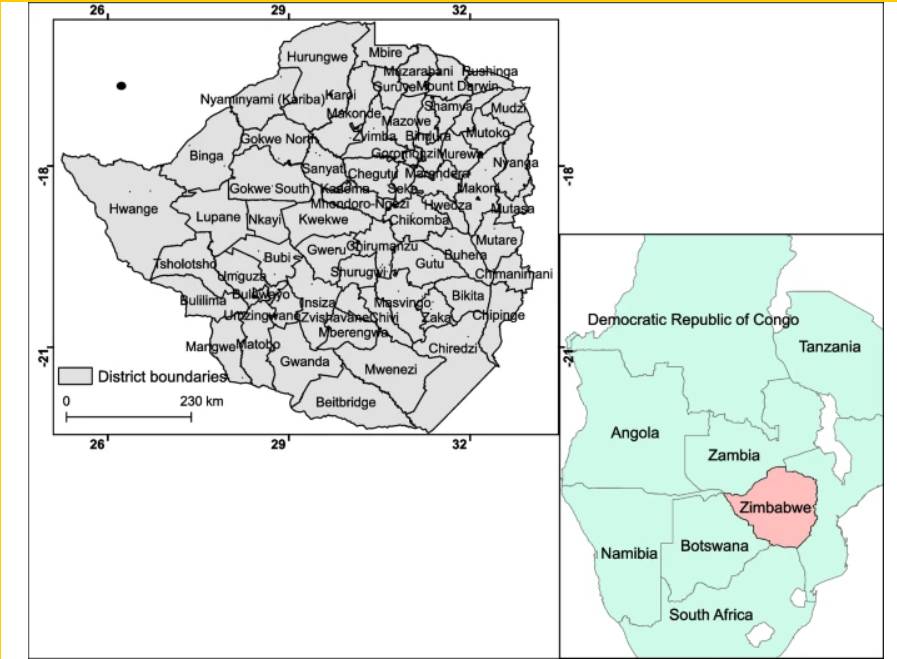Background
In Zimbabwe, anthrax is endemic with outbreaks being reported almost annually in livestock, wildlife, and humans over the past 40 years. Accurate modelling of its spatial distribution is key in formulating effective control strategies. In this study, an Ensemble Species Distribution Model was used to model the current and future distribution of anthrax occurrence in Zimbabwe.
Methods
Bioclimatic variables derived from the Beijing Climate Centre Climate System Model were used to model the disease. Collinearity testing was conducted on the 19 bioclimatic variables and elevation to remove redundancy. Variables that had no collinearity were used for anthrax habitat suitability modelling. Two future climate change scenarios for different Representative Concentration Pathways (RCP), RCP4.5 and RCP8.5 were used. Model evaluation was done using true skill, Kappa statistics and receiver operating characteristics.
Results
The results showed that under current bioclimatic conditions, eastern and western districts of Zimbabwe were modelled as highly suitable, central districts moderately suitable and southern parts marginally suitable for anthrax occurrence. Future predictions demonstrated that the suitable (8%) and highly suitable (7%) areas for anthrax occurrence would increase under RCP4.5 scenario. In contrast, a respective decrease (11%) and marginal increase (0.6%) of suitable and highly suitable areas for anthrax occurrence were predicted under the RCP8.5 scenario. The percentage contribution of the predictors varied for the different scenarios; Bio6 and Bio18 for the current scenario, Bio2, Bio4 and Bio9 for the RCP4.5 and Bio3 and Bio15 for the RCP8.5 scenarios.
Read more: bmcpublichealth.biomedcentral.com
Photo: bmcpublichealth.biomedcentral.com


Leave a Reply